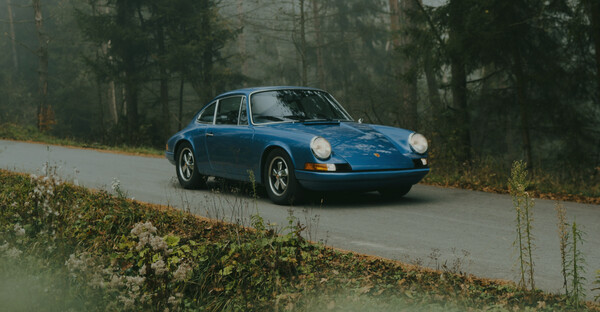Description
The small Bristol-powered racer, designed by John Tojeiro in the early 1950s, was a great success in competition with Cliff Davis. AC Cars, renowned for its sporty models but with an ageing range, was looking for a new model and took a keen interest in Tojeiro's small car and decided to put it into production in 1954, under the name Ace. The Tojeiro bodywork was virtually a carbon copy of the beautiful Touring designed Ferrari 166 MM barchetta and was carried over to the Ace with minor modifications. It was based on a ladder chassis with independent suspensions, inspired by the Cooper that John Tojeiro had also designed.
However, AC did not use the Bristol engine for its model, preferring to stick with the good old 2 litre long stroke six cylinder engine with overhead camshaft. It was designed in 1919 and its modest 80 hp was a bit too much for a modern sports car.
The engine was increased to 100 hp, which gave the Ace a respectable, but not spectacular, performance. A very attractive and original fastback coupé version, designed by Alan Turner and named Aceca, was unveiled at Earls Court in London in 1954. Its body was constructed from hand-formed aluminum sheet and was supported by a tubular truss. To reduce the resonance box effect in the passenger compartment, AC mounted the components on rubber blocks. The tubular chassis was more solidly built than that of the Ace.
The Aceca was a very attractive, light and well powered GT car. The Ace and Aceca helped to restore AC's pre-war notoriety among sports connoisseurs. The Ace and Aceca underwent very few changes during their careers, apart from the replacement of the engine in 1956, when the more powerful 2-litre Bristol six-cylinder (up to 130 bhp) became available. Towards the end of production, the excellent 2. 6 litre Ford Zephyr engine, light and small for its displacement, was finally adopted. The combination of a stiff chassis that held the road well and an interesting power-to-weight ratio - with the Bristol engine the car was already reaching 190 km/ h - allowed the Ace version to achieve many racing successes in the production Sport class, its best result being seventh place overall and first in class at Le Mans in 1959.
The rest of the story is known. This well-born car was chosen by Carroll Shelby to install a Ford V8 in its specially strengthened chassis, giving birth to the mythical Cobras which definitively took AC out of a restricted circle of connoisseurs and gave it international recognition.
BE625 was first registered in 1957, making it eligible for the Mille Miglia. It is one of only 169 Bristol-powered Acecas produced. The green Log-Book shows the first owners, and the Club notes that this is the first Aceca to leave the factory with disc brakes as standard. We know this car well, having crossed paths many times with its previous owner, who has used it a lot since he bought it in 2017.
Since then, a great deal of work has been carried out to ensure not only reliability, but also comfort on long-distance journeys. A gearbox rebuild by Stanton Motorsports in 2018. Classic Performance Engineering provided full Aceca maintenance, including a complete differential rebuild in 2020. As for the engine, Pendine Works has completely rebuilt its rare 100C2, installing a new clutch at the same time. For our part, we recently had the water pump replaced and carried out some maintenance by the Parisian workshop we work with.
As the previous owner was the grandson of the founder of Bristol Cars, he has also included in the history copies of a fascinating correspondence between Bristol Cars and AC. This is an exceptionally well-maintained example, ready for many miles. Always perfectly maintained, with a beautiful backrest, it's ready to hit the road for the next Tour Auto, or the Mille Miglia.

















